Located in the depths of Lake Tanganyika, the Cuckoo Catfish is a unique and fascinating species that has garnered attention from aquarium enthusiasts and scientists alike. Belonging to the family Mochokidae, this fish is also known as the Cuckoo Squeaker or Multi Punk.
Table of Contents
One of the most interesting aspects of the Synodontis Multipunctatus is its reproductive strategy. As a brood parasite, it relies on the smell of spawning Cichlids to trigger its own reproductive process. Once the Cichlids lay their eggs, the Catfish quickly moves in and consumes the eggs, replacing them with its own . This unique behavior has been studied extensively in research journals, including a study published in the Royal Society Publishing.
The scientific name Synodontis Multipunctatus can be broken down into two parts. “Synodontis” comes from the Greek words “syn” meaning “together” and “odous” meaning “tooth”. This refers to the fish’s unique dental structure. “Multipunctatus” comes from the Latin words “multi” meaning “many” and “punctatus” meaning “spotted”. This refers to the fish’s distinctive spotted pattern.
In the wild, the Synodontis Multipunctatus can be found in rocky shorelines and muddy substrates in Lake Tanganyika. They are bottom-dwellers and feed on a variety of foods, including algae, detritus, and small invertebrates . In captivity, they can be fed a diet of commercial pellets, frozen foods, and live foods.
Despite their unique reproductive strategy, the Synodontis Multipunctatus is a relatively peaceful species. They are active and sociable, and can be kept in groups of three or more. However, they can be territorial towards other Catfish species, so it’s best to keep them with other peaceful species.
Fun Facts
- The Synodontis Multipunctatus is the only fish known to practice brood parasitism .
- They are able to produce audible sounds by rubbing the base of their pectoral spine against their swim bladder .
- They have a unique way of communicating with each other through a series of clicks and whistles .
The Synodontis Multipunctatus was first described in 1898 . Since then, it has become a popular species among aquarium enthusiasts due to its unique behavior and striking appearance.
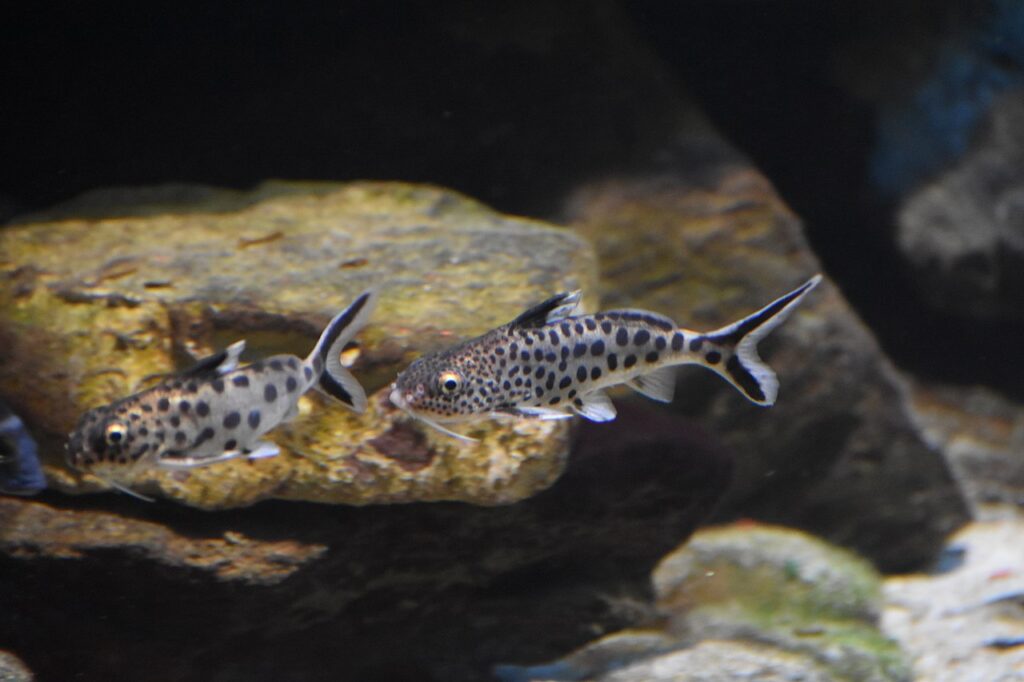
Cuckoo Catfish Key Information
The Cuckoo Catfish is a stunning species, boasting an elongated body with striking coloration, typically gold, white, or tan, with distinctive black patches that increase in size from the head towards the tail. The pectoral, dorsal, and caudal fins are predominantly black with white or transparent edges, and the two anal fins are pale with small black triangles positioned close to the body.
Cuckoo Catfish Table
| Family | Mochokidae (upside-down catfishes) |
| Origin | Africa; Lake Tanganyika |
| Price | Not specified |
| Common Names | Cuckoo Squeaker, Multi Punk, Multi-Spotted Synodontis |
| Variants | Hybrids available, but pure species is rare |
| Ideal Tank Size | 20-50 gallons |
| Water Parameters | pH 7.5-8.5, temperature 72-82°F, water hardness 4-15 KH |
| Lifespan | Up to 15 years |
| Full Size | Males up to 8 inches, females up to 11 inches |
| Natural Environment | Rocky shores of Lake Tanganyika, muddy, sandy, or shell substrates |
| Behavior | Peaceful, social, nocturnal, and territorial |
| Habitat Preference | Bottom-dweller, requires hiding places and open swimming space |
| Aquarium Decoration | Rocky set-up with caves, fine gravel or sandy bottom |
| Ideal Tank Mates | Other Synodontis catfish, African cichlids, large barbs, rainbowfish |
| Fish to Avoid | Aggressive species, fin-nippers, and small fish that can be mistaken for food |
| Best Foods/Diet | Omnivorous, live, frozen, and meaty foods, including snails, crustaceans, and insect larvae |
| Disease | Prone to common freshwater diseases, such as ich and bacterial infections |
| Sex-switch | Not possible |
| Gender Differences | Females are plumper during spawning season and larger when mature |
| Care Level | Beginner-intermediate |
| Breeding Level | Advanced, due to unique reproductive strategy |
Ideal Tank Mates for Cuckoo Catfish
When choosing tank mates for the Cuckoo Catfish, it’s essential to consider their compatibility and the overall harmony of the aquarium. The Cuckoo Catfish is a peaceful, bottom-dwelling species that can be kept with a variety of other fish. Here are ten ideal tank mates that can complement the Cuckoo Catfish’s unique characteristics.
Compatibility Considerations
When selecting tank mates for the Cuckoo Catfish, it’s crucial to consider their behavior, size, and habitat requirements. The Cuckoo Catfish is a nocturnal species that spends most of its time hiding in crevices and under rocks. Therefore, tank mates that are active during the day and occupy the middle and upper water columns are ideal.
List of Ideal Tank Mates
Gourami
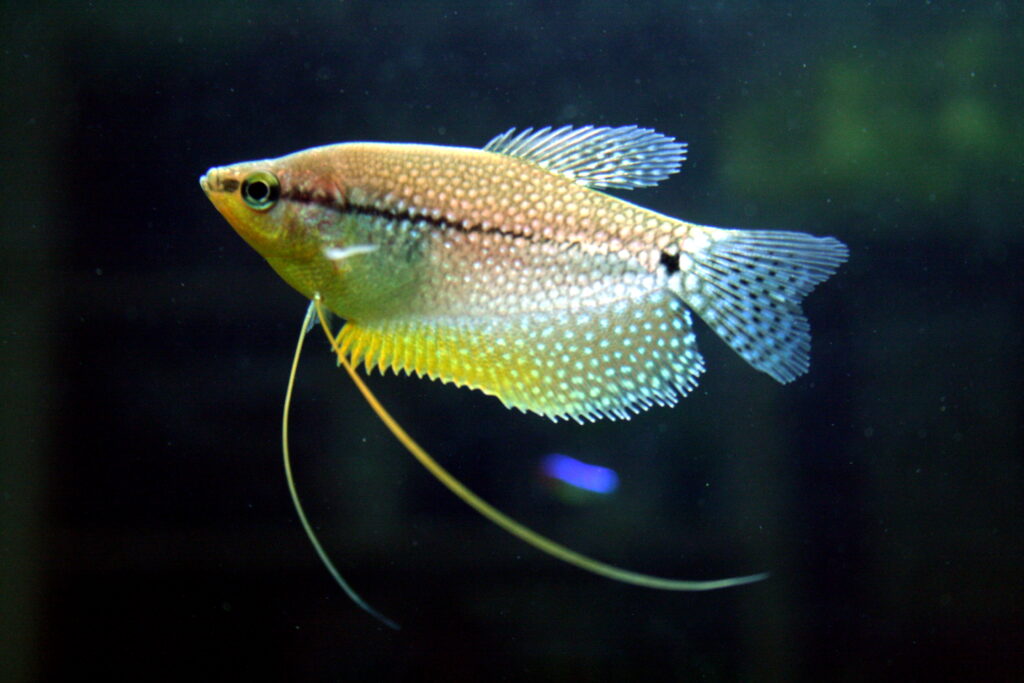
The Gourami is a popular freshwater fish that is compatible with the Cuckoo Catfish. They are peaceful, easy to care for, and come in a variety of colors and patterns. Gouramis are active during the day and occupy the middle water column, making them an ideal tank mate for the Cuckoo Catfish.
| Common/Market Names | Price Range | Care Level | Behavior | Life Span | Max Size |
|---|---|---|---|---|---|
| Gourami, Anabantid | $5-$15 | Easy | Peaceful, social | 5-7 years | 6-8 inches |
Plecos
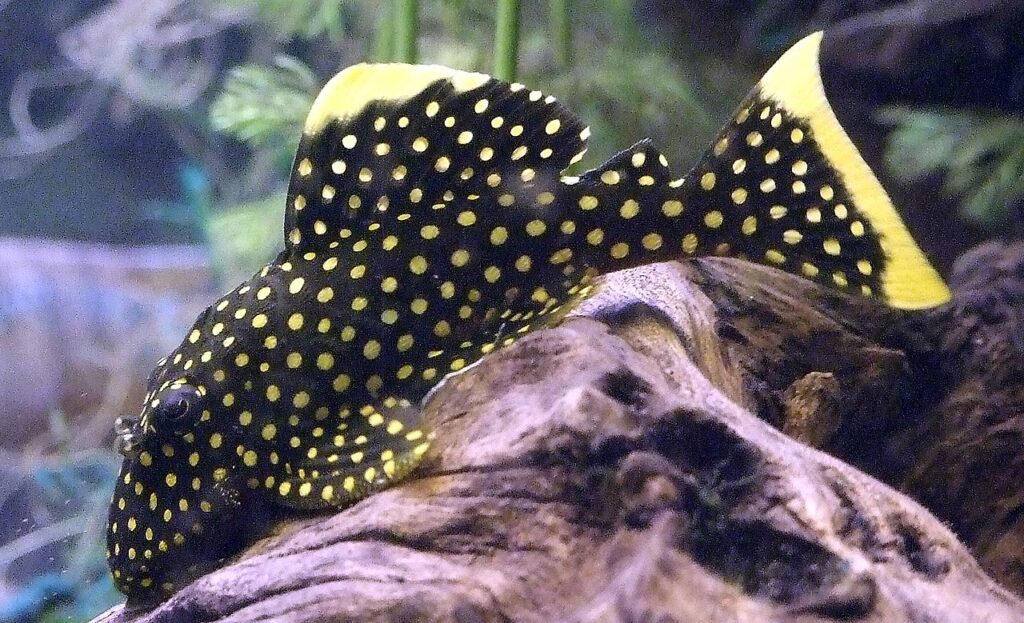
Plecos are armored catfish that are well-suited for a community tank with the Cuckoo Catfish. They are peaceful, gentle, and easy to care for. Plecos are nocturnal, but they are not competitive with the Cuckoo Catfish for food or space.
| Common/Market Names | Price Range | Care Level | Behavior | Life Span | Max Size |
|---|---|---|---|---|---|
| Plecos, Armored Catfish | $10-$30 | Easy | Peaceful, nocturnal | 10-15 years | 12-18 inches |
Rainbow Fish
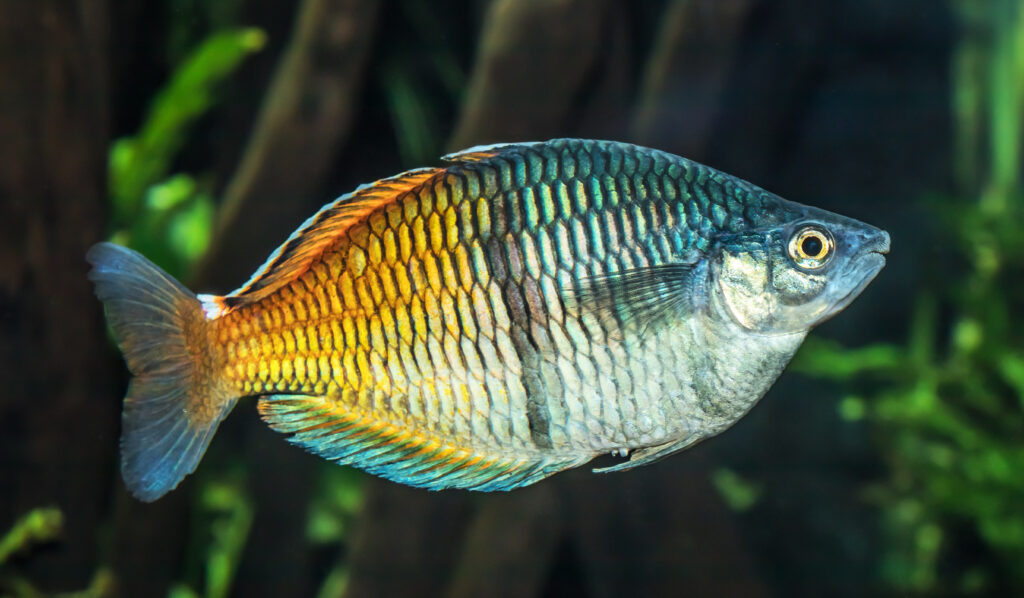
Rainbow Fish are active, peaceful fish that are compatible with the Cuckoo Catfish. They are easy to care for and come in a variety of colors. Rainbow Fish occupy the middle and upper water columns, making them an ideal tank mate for the Cuckoo Catfish.
| Common/Market Names | Price Range | Care Level | Behavior | Life Span | Max Size |
|---|---|---|---|---|---|
| Rainbow Fish, Melanotaenia | $5-$15 | Easy | Active, peaceful | 5-7 years | 4-6 inches |
Giant Danio
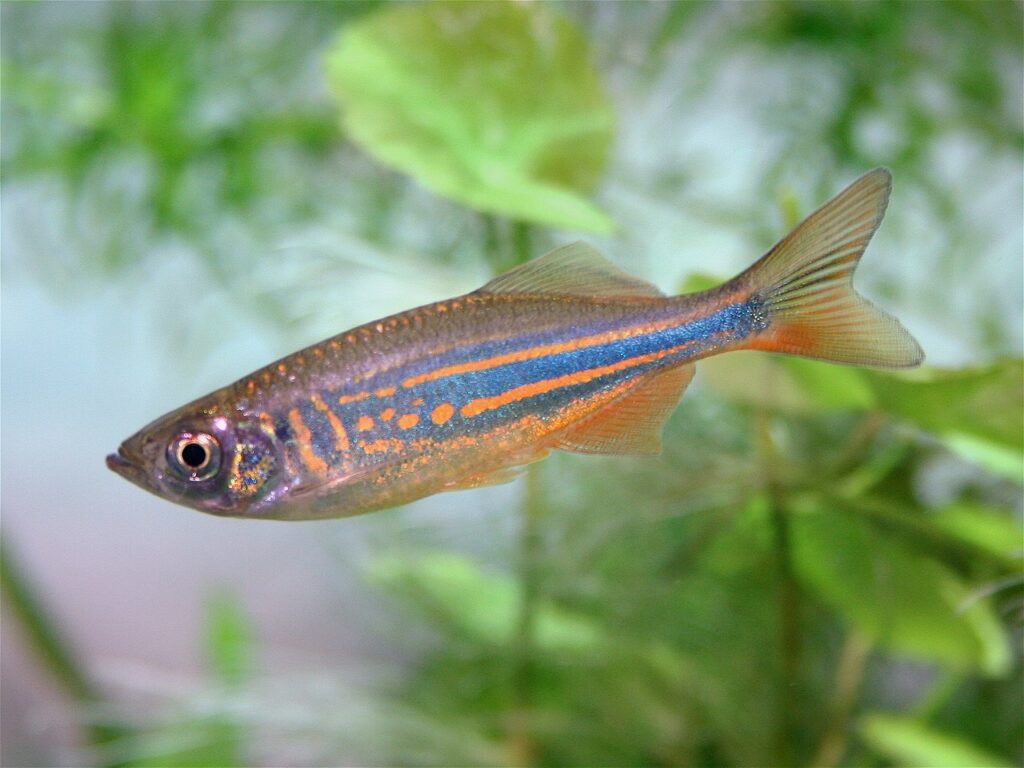
Giant Danios are active, hardy fish that are compatible with the Cuckoo Catfish. They are easy to care for and can tolerate a range of water conditions. Giant Danios occupy the middle and upper water columns, making them an ideal tank mate for the Cuckoo Catfish.
| Common/Market Names | Price Range | Care Level | Behavior | Life Span | Max Size |
|---|---|---|---|---|---|
| Giant Danio, Devario | $5-$10 | Easy | Active, hardy | 5-7 years | 6-8 inches |
Rosy Barb
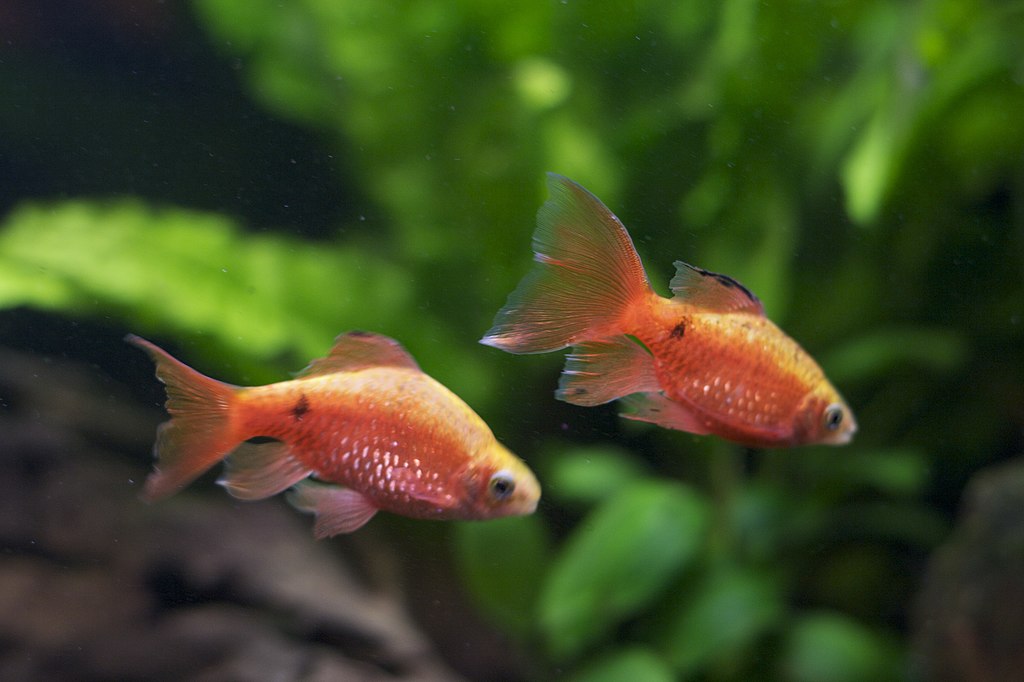
Rosy Barbs are peaceful, active fish that are compatible with the Cuckoo Catfish. They are easy to care for and come in a variety of colors. Rosy Barbs occupy the middle water column, making them an ideal tank mate for the Cuckoo Catfish.
| Common/Market Names | Price Range | Care Level | Behavior | Life Span | Max Size |
|---|---|---|---|---|---|
| Rosy Barb, Pethia | $5-$10 | Easy | Peaceful, active | 5-7 years | 4-6 inches |
Denison Barb
Denison Barbs are peaceful, active fish that are compatible with the Cuckoo Catfish. They are easy to care for and come in a variety of colors. Denison Barbs occupy the middle water column, making them an ideal tank mate for the Cuckoo Catfish.
| Common/Market Names | Price Range | Care Level | Behavior | Life Span | Max Size |
|---|---|---|---|---|---|
| Denison Barb, Sahyadria | $10-$20 | Easy | Peaceful, active | 5-7 years | 6-8 inches |
African Cichlids
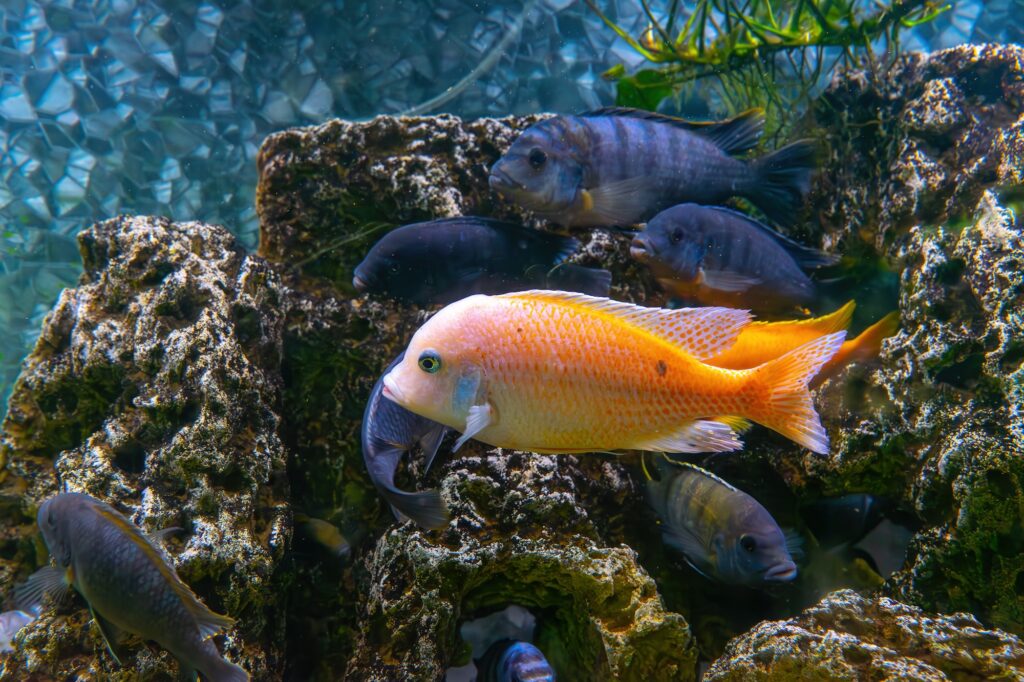
African Cichlids are a diverse group of fish that are compatible with the Cuckoo Catfish. They are generally peaceful, but some species can be territorial. African Cichlids occupy the middle and upper water columns, making them an ideal tank mate for the Cuckoo Catfish.
| Common/Market Names | Price Range | Care Level | Behavior | Life Span | Max Size |
|---|---|---|---|---|---|
| African Cichlids, Cichlidae | $10-$50 | Moderate | Peaceful, territorial | 5-10 years | 6-12 inches |
Mbunas
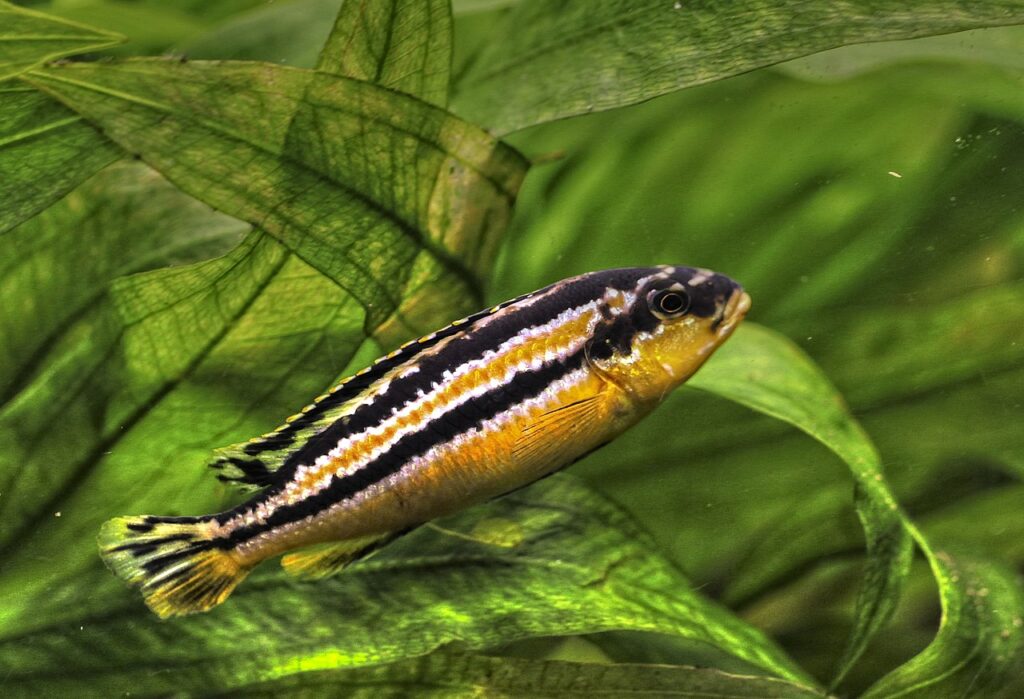
Mbunas are a type of African Cichlid that are compatible with the Cuckoo Catfish. They are generally peaceful, but some species can be territorial. Mbunas occupy the middle and upper water columns, making them an ideal tank mate for the Cuckoo Catfish.
| Common/Market Names | Price Range | Care Level | Behavior | Life Span | Max Size |
|---|---|---|---|---|---|
| Mbunas, Cichlidae | $10-$30 | Moderate | Peaceful, territorial | 5-10 years | 6-10 inches |
Haps
Haps are a type of African Cichlid that are compatible with the Cuckoo Catfish. They are generally peaceful, but some species can be territorial. Haps occupy the middle and upper water columns, making them an ideal tank mate for the Cuckoo Catfish.
| Common/Market Names | Price Range | Care Level | Behavior | Life Span | Max Size |
|---|---|---|---|---|---|
| Haps, Cichlidae | $10-$30 | Moderate | Peaceful, territorial | 5-10 years | 6-10 inches |
Senegal Bichir
Senegal Bichirs are ancient fish that are compatible with the Cuckoo Catfish. They are generally peaceful, but can be territorial. Senegal Bichirs occupy the middle and upper water columns, making them an ideal tank mate for the Cuckoo Catfish.
| Common/Market Names | Price Range | Care Level | Behavior | Life Span | Max Size |
|---|---|---|---|---|---|
| Senegal Bichir, Polypterus | $20-$50 | Moderate | Peaceful, territorial | 10-15 years | 12-18 inches |
FAQs about Cuckoo Catfish
How do Cuckoo Catfish interact with other fish in the aquarium?
Cuckoo Catfish are generally peaceful and can be kept with a variety of other fish, including African cichlids, mbunas, and haps. However, they can be territorial and may defend their territory from other catfish species.
What is the ideal water flow for Cuckoo Catfish?
Cuckoo Catfish prefer moderate water flow, which helps to simulate their natural environment in Lake Tanganyika. A water flow rate of 10-20 gallons per minute is recommended.
Can Cuckoo Catfish be kept in a planted aquarium?
Yes, Cuckoo Catfish can be kept in a planted aquarium, but they may uproot plants while searching for food. It’s essential to choose plants that are secure and can withstand the catfish’s digging behavior.
How often should I feed my Cuckoo Catfish?
Cuckoo Catfish are nocturnal feeders and should be fed at night when they are most active. Feed them 2-3 times a week, only as much as they can consume within a few minutes.
What is the best way to sex Cuckoo Catfish?
Sexing Cuckoo Catfish can be challenging, but males tend to have a more prominent dorsal fin and a slender body shape compared to females. Females are generally plumper and have a more rounded belly.
Can Cuckoo Catfish be bred in captivity?
Yes, Cuckoo Catfish can be bred in captivity, but it requires a specific setup and a compatible host fish. The catfish will lay their eggs in the host fish’s spawning nest, and the host fish will care for the eggs until they hatch.
How long do Cuckoo Catfish eggs take to hatch?
Cuckoo Catfish eggs typically take 48-72 hours to hatch after spawning. The larvae will then feed on the host fish’s eggs and larvae before being released.
What is the best food for Cuckoo Catfish fry?
Cuckoo Catfish fry can be fed baby brine shrimp, which provide essential nutrients for their growth and development. As they grow, they can be transitioned to larger foods such as chopped bloodworms.
Can Cuckoo Catfish be kept in a community aquarium with small fish?
No, Cuckoo Catfish are not suitable for community aquariums with small fish, as they may view them as food. They are best kept with larger fish that can defend themselves.
How often should I perform water changes for my Cuckoo Catfish?
Regular water changes are essential for maintaining the health and well-being of Cuckoo Catfish. Perform water changes of 10-20% every week to keep the water parameters stable and prevent the buildup of toxins.